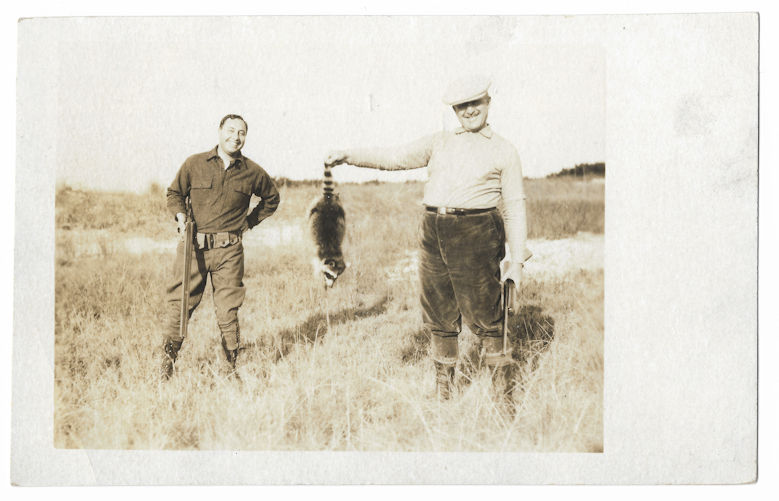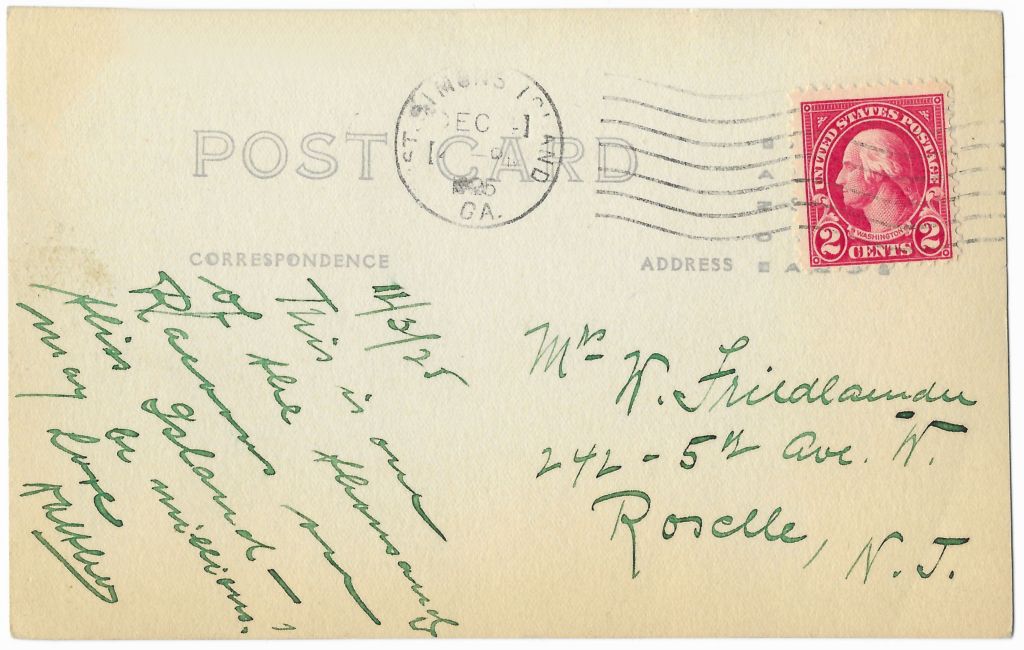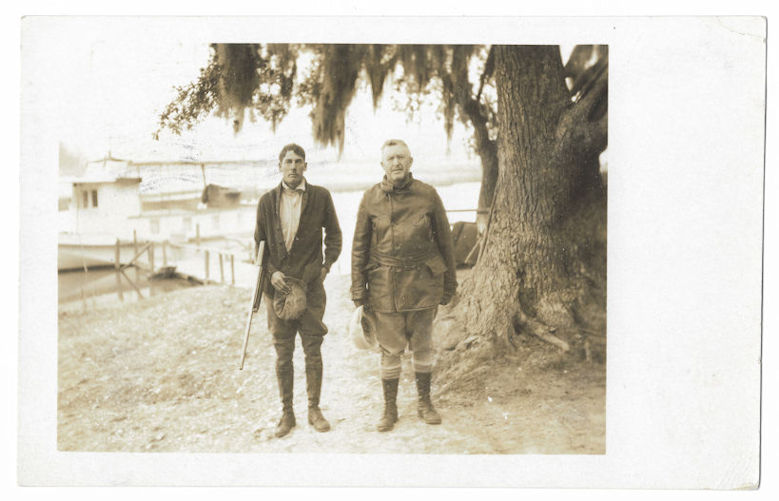



I was unable to reproduce the other cards in this series, but a buck and several hogs were among the other game taken on the trip.




I was unable to reproduce the other cards in this series, but a buck and several hogs were among the other game taken on the trip.
Filed under --GLYNN COUNTY GA--, St. Simons Island GA
This gentleman [known on the island as The Original Crabman] was getting his crab trap ready when I was walking out to the end of the pier to photograph the progress on the Golden Ray cleanup effort. As is typical, he was using a chicken neck and fish head as bait. After dropping his trap in the water off the pier for just a few minutes, he brought it back up with several crabs.
Filed under --GLYNN COUNTY GA--, St. Simons Island GA
This early example of the International Style, designed by Macon architect Fred Stroberg, uniquely employees the local building material known as tabby to make a bold statement about the past and the future. It has also been referred to as “Mediterranean House” and the outline of a shed roof on the side indicates it may have had such a decorative element at one time, but it’s decidedly International in appearance and spirit, making it an even more significant landmark.
The house is primarily associated with the late Mildred Weigle Nix Huie (1907-2000). A native of Augusta, Mrs. Huie received a degree in Classical Education from Florida State University. She and her husband Carl purchased the house in 1967 and it remained Mrs. Huie’s home and studio until her death. Mrs. Huie was an accomplished Impressionist painter, sculptor and historian, and upon establishing the Left Bank Art Gallery in 1962, became an integral part of the St. Simons cultural scene, through the fostering of other artists and the free access she provided to her own collection as well as philanthropic pursuits.
Mrs. Huie’s daughter, Millie Wilcox, maintained the home as the Mildred Huie Museum for more than a decade after her mother’s death.
The property was the first site acquired by the St. Simons Land Trust in 2018 and though the museum itself is closed, the grounds are a welcome respite from the busy commercial area of Frederica Road, open and free to all.
Filed under --GLYNN COUNTY GA--, St. Simons Island GA